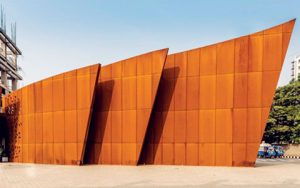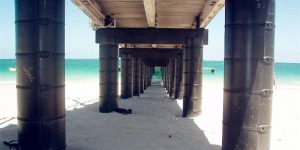Carbon Steel Plate – Things You Should Know

Carbon steel plates are typically defined as steel that contains minimal alloying elements. The primary elements present are carbon (C), manganese (Mn), phosphorus (P), sulfur (S), and silicon (Si). Aside from these, there are no specified minimum limits for additional elements such as aluminum (Al), chromium (Cr), nickel (Ni), molybdenum (Mo), or vanadium (V).
Key Characteristics of Carbon Steel Plates:
- Composition: Carbon steel plates typically contain carbon content ranging from 0.05% to 2.0%, which affects their hardness and strength.
- Types: They can be categorized into low, medium, and high carbon steels, each with different properties and applications.
- Applications: Commonly used in structural applications, such as beams, columns, and bridges, as well as in manufacturing processes for machinery and equipment.
Benefits:
- Strength and Durability: Carbon steel plates are known for their high tensile strength and ability to withstand heavy loads.
- Cost-Effectiveness: They are generally more affordable compared to other types of steel, making them a popular choice for various projects.
- Weldability: Many carbon steel plates can be easily welded, allowing for versatile construction and fabrication options.
Carbon steel plates are offered in various grades, categorized based on carbon content and strength.
These plates are classified as low, medium, and high carbon steel. Increasing carbon content enhances the plate’s durability and strength. Additionally, there are subcategories based on thickness, usage, and manufacturing processes. Typically, carbon steel plates range in thickness from 0.4 mm to 80 mm, with widths varying from 1,000 mm to 45,000 mm, and lengths can extend up to 18 meters. However, lengths can be customized to meet specific application needs. Furthermore, these plates can be utilized to produce cold-rolled steel coils.
to put them into various applications. One can also make cold rolled steel coils from them.
Carbon content levels for each of carbon steel plate
Low carbon steel plate: For carbon content 0.06% to 0.25%, also we call it mild steel plate.
Medium carbon steel plate: C content from 0.25% to 0.55%.
High carbon steel plate: 0.55% to 1.0%, also called hard steel plate.
As the content of Carbon increase, the steel plate hardness increases.
What Are The Different Types Of Carbon Steel Plates Available?
Carbon steel plates are utilized across various industries due to their versatility. They are categorized by carbon content, ranging from low to high, and also classified based on their specific usage and applications. Different types of carbon steel plates serve as fundamental materials for component construction in machinery and production companies, thanks to their durability, making them suitable for various manufacturing parts.
In addition to carbon steel plates, other categories include vessel steel plates, shipbuilding or construction steel plates, structural steel plates, pipeline plates, and stainless steel plates.
Below there are Different Types Of Carbon Steel Plates And Their Usage.
Carbon Structural Steel Plate
It is mostly used in construction industry and hence, the quality, durability, and performance have to be of highest standard. They have to withstand overweight load and pressure and must be corrosion resistant. It is known by the name construction steel plate.
Boiler Steel Plate
These are high-pressure plates generally used in designing vessels, boilers, and heat containers. Carbon boiler steel plates have low corrosive property and can withstand low heat. Several layers of either chromium or nickel are added to make it suitable for usage in various environments.
Tanks Steel Plate
These plates are used for building of oil and gas tanks, storage tanks, water tanks, and tanks for storage other all kinds of stuffs.
Carbon Shipbuilding Steel Plate
Shipbuilding Steel Plate – These plates are in high demand especially from oil and gas industry as they require thick plates of extremely good quality. Most of these are made according to the specifications of the customers and the steel used is certified because a small lamellar tear can be fatal.
What standards referred to carbon steel plate
Carbon steel plate almost include all the common standards of steel plate/sheet.
1. ASTM A36 plates – The most common standards of carbon steel plate
2. ASTM A283 Grade A, B, C – Also most common material in carbon structural.
3. ASTM A516 – For boiler, vessel steel plate.
4. ASTM A537 – For heat treated carbon steel plate in fusion welded pressure vessels and structural steel plates.
5. ASTM A573 – A kind of structural steel plate with carbon-manganese-silicon.
6. ASTM A572 – ASTM A572 plate mechanical strength is higher than A36. Where with lower weight.
7. ASTM A737 – For boiler, pressure vessels steel plate of low alloy steel.
and etc..
So carbon steel plates have a widely coverage for different types of steel plates in different industries.
Octal has carbon steel plate on sale, with very competitive prices from China, if you have any projects required for above plates, just contact us for a good offer.

























